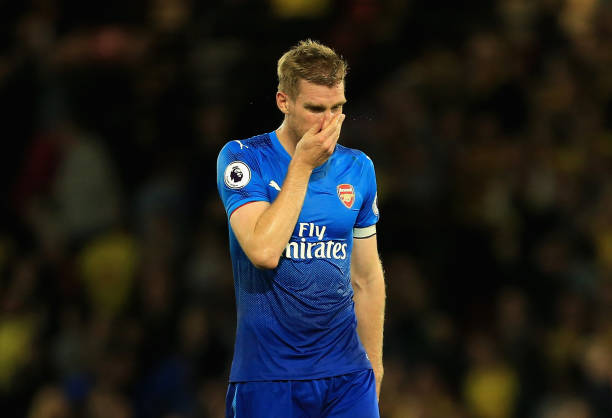Despite committing to a new shape, the same problems keep appearing at Arsenal.
Arsenal’s change to a back three has been fascinating in how it seemingly made a huge difference towards the end of last season.
Playing the usual 4-2-3-1, Arsenal were struggling. They lost seven of their 10 games between the end of January and mid-April, conceding 26 goals in the process. As Arsenal plummeted down the table and looked less and less likely to finish in the top four, Wenger saw the need the change. So on Monday, April 17th 2017, Arsenal used a back three for the first time in two decades.
With that formation, Arsenal ended the season with nine wins from their final 10 games, picking up the FA Cup in the process. The reason seemed obvious: Arsenal were defending better with the extra defender, and extracting more from their two key attackers, Alexis Sanchez and Mesut Ozil, by allowing them even greater freedom.
But was that actually the case?
Statistically, at least, it wasn’t.
According to numbers provided by blogger 7amkickoff, Arsenal actually conceded more shots than they did with a back four (11.5 with a back four, 12.8 with a back three), while their Expected Goal allowance – that is, the number of shots with a high chance of going in conceded – remained the same at 1.6 – a figure that’s too high for a team aspiring to challenge the top of the table.
Eight games into the new season, and the trend remains the same.
All the mistakes we’re familiar with keep resurfacing. The midfield still leaves space behind it for teams to exploit, and defenders still fail to prevent crosses into the box and mark effectively. Players aren’t pressing or covering space. The formation has seen a rise in the number of chances Arsenal create per game, but defensively, it’s changed very little.
That in itself seems strange when Arsenal have, effectively, dropped an attacker for an extra defender. Yet, despite it’s defensive appearance, Arsenal’s version of the 3-4-3 is an offensive one. Wenger still only deploys one holding midfielder instead of two, and still encourages his team to play the same attacking football it always did.
This shows us is that Arsenal’s problem is not with their shape, but with their game plan and their ability to execute it.
Formations, in my view, mean very little.
It’s more about finding the right combination of players who can effectively carry out a plan, either through their own ability or good coaching. When you think back to the wins over City and Chelsea in the FA Cup, two of Arsenal’s best performances in recent times, there was strong discipline throughout the team to aid our defending.
A back three wasn’t necessary to accomplish that.
What Arsenal need to assess, then, is whether the third centre back is necessary for what they want to achieve, and isn’t better suited to another area of the pitch.
Whether it’s two centre backs or three, Arsenal’s defending is no better off. It may benefit us to have an extra midfielder in place to cover more space and offer more protection.
Similarly, a tweak to our current two-man midfield may also improve our defending. Either way, there has to be some change, otherwise the same problems will keep occurring.

